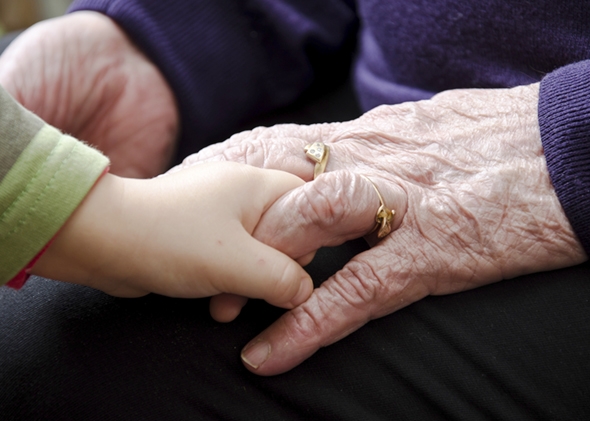
How Tall Is Your Family Tree?
Longevity is playing a role in remaking the face of family.

How tall is your family tree? Most of us don’t expect to see more than four generations in a family: kids, parents, grandparents and maybe great-grandparents. Increasingly, however, there are more families boasting five or more generations. Longevity is playing a role in remaking the face of family.
Take, for example, Canadian Priscilla Steiner who gave birth to baby boy Ethan John Curtis last July. The event itself wouldn’t be news except for the fact that Ethan’s arrival meant that the family now had six generations of living relatives.
Here’s how the maternal lineage worked out: When Ethan was born, his mom Priscilla was 19-years-old and his grandmother Stephanie was just 34. Great-grandmother Brenda was 51, great-great grandmother Marilyn was 68, and great-great-great grandmother Doreen was 86 years young. As amazing as all that sounds, Ethan’s family is not the only one with six generations and it’s not even a world record.
According to the Guinness book of world records, in 1989 a family in Wisconsin logged in at seven generations when Augusta Bunge aged 109 years 97 days welcomed the arrival of her great-great-great-great grandson Christopher John Bollig. Similar stories of big families will become more frequent as healthspans extend and people live longer lives, but not everyone will choose to have children at young ages.
In fact, as life expectancy has been growing, so has the age of mothers at first birth. In the US, the average age of first-time mothers increased from 21.4 years in 1970 to 25 years in 2009. In other countries, the growth has been even greater.
In Germany and Britain, the average age at first childbirth is 30. This might make new American moms seem young, but consider that the proportion of first births to American women aged 35-39 increased by eight-fold from 1970 to 2012 and by more than four fold for mothers in the 40-44 age bracket from 1985 to 2012.
That’s a big change, showcasing the desire of many women to have children later than has historically been the case. So while young mothers in a world of greater longevity can drive up the height of family trees, other mothers who wait longer to have kids are creating a new category of parents who are older and more experienced.
Celebrity moms are leading the way when it comes to older parenting. Susan Sarandon had a baby at 46, actress Laura Linney had her first child at 49, and Halle Berry had her second at 47 years. While some might consider these women to be on the edge of the possible age range for parenthood, late 40’s childbearing seems positively young compared to the age of the woman who holds the title of ‘world’s oldest mother.’
In 2008, Indian woman Rajo Devi Lohan gave birth to her first child at the age of 69 years. It wasn’t a natural birth – she used IVF and donated eggs – but technology allowed her to finally achieve something she had been wishing for her entire life. Five years after the birth, at age 74, the septuagenarian told the UK Daily Mail “When I used to look around and see children, my heart felt sad that I couldn't have one - I desperately wanted to have a child of my own.” Now she does, and she says it keeps her alive.
Some question the wisdom of having a child at such an advanced age. New York Times blogger Lisa Belkin didn’t seem impressed at the time, asking “how old is too old to have a baby?” Many think that 70 is well past the limit, yet as science and technology allow human beings to live longer and healthier lives, the answer to Belkin’s question will continue to inch upward, particularly as reproductive science allows women (and men) to free themselves from current biological constraints.
Thanks to amazing advances in regenerative medicine and other technologies, both women and men will be healthier for longer periods of time. This will change many things about society, including our ideas about the ‘typical’ family structure.
Family will always be important, but the way it looks is already starting to change and diversify. Some people choose to have children young, while others wait. There are also those who have more than one child with large intervals in between. In the future, this will make for larger gaps between siblings than we’ve ever seen before. More time to be alive also means more possibilities for divorce, remarriage and the creation of 2nd or 3rd families. The possibilities are almost endless.